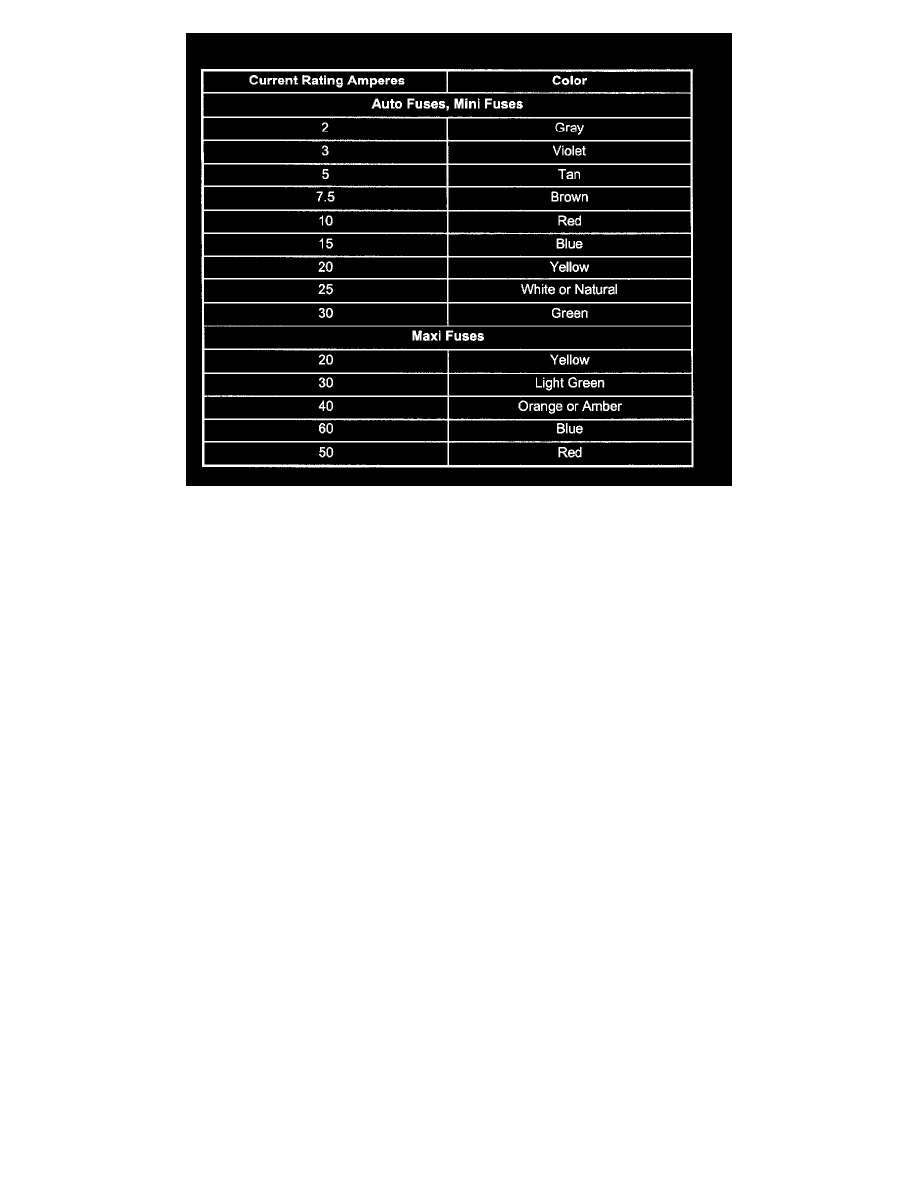Hombre XS Space Cab 2WD L4-2.2L CPC (1999)

Fuse Types
Fuse Types
Circuit Protection - Circuit Breakers
A circuit breaker is a protective device that is designed to open the circuit when a current load is in excess of the rated breaker capacity. If there is a short
or other type of overload condition in the circuit,the excessive current will open the circuit between the circuit breaker terminals. Two types of circuit
breakers are used.
Circuit Breaker: This type opens when excessive current passes through it for a period of time. It closes again after a few seconds, and if the cause of
the high current is still present, it will open again. The circuit breaker will continue to cycle open and closed until the condition causing the high current
is removed.
Positive Temperature Coefficient (PTC) Circuit Breaker: This type greatly increases its resistance when excessive current passes through it. The
excessive current heats the PTC device, as the device heats its resistance increases. Eventually the resistance gets so high that the circuit is effectively
open. Unlike the ordinary circuit breaker the PTC unit will not reset until the circuit is opened, by removing the voltage from its terminals. Once the
voltage is removed the circuit breaker will re-close within a second or two.
Circuit Protection - Fusible Links
Circuit Protection - Fusible Links
Fusible link is wire designed to melt and break continuity when excessive current is applied. It is often located between or near the battery and starter or
electrical center. Use a continuity tester or a J 39200 DMM at each end of the wire containing the fusible link in order to determine if it is broken. If
broken, it must be replaced with fusible link of the same gage size.
Repairing a Fusible Link
Important: Fusible links cut longer than 225 mm (approx. 9 inches) will not provide sufficient overload protection.
Refer to Splicing Copper Wire Using Splice Clips.
Repairing Damaged Wire Insulation
If the conductive portion of the wire is not damaged, locate the problem and apply tape around the wire. If the damage is more extensive, replace the
faulty segment of the wire. Refer to Splicing Copper Wire. Using Splice Clips and follow the instruction to repair the wire.
Wire Size Conversion Table
